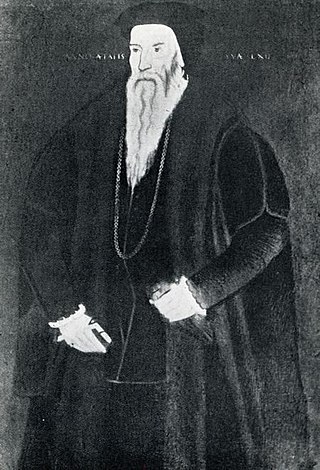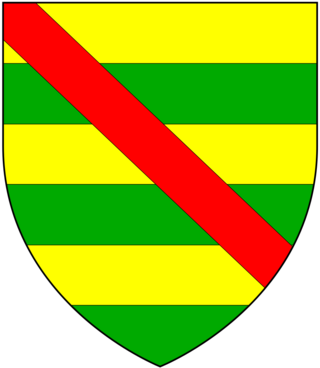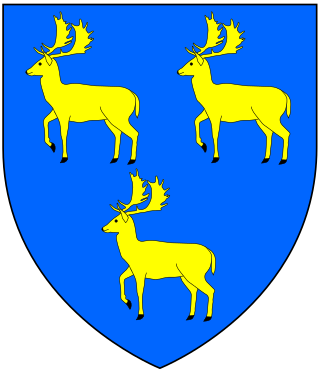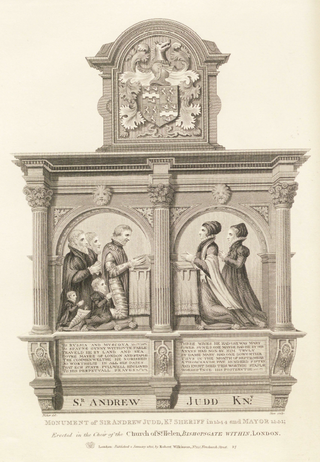

Sir Thomas White (1492 – 12 February 1567) was an English cloth merchant, Lord Mayor of London in 1553, and a civic benefactor and founder of St John's College, Oxford and Merchant Taylors' School.


Sir Thomas White (1492 – 12 February 1567) was an English cloth merchant, Lord Mayor of London in 1553, and a civic benefactor and founder of St John's College, Oxford and Merchant Taylors' School.
Thomas White was born in 1492 in Reading, Berkshire, [1] the son of William White, a clothier of Reading, and his wife, Mary, daughter of John Kibblewhite of South Fawley, also in Berkshire. He was brought up in London. Sir Thomas was twice married, to Avicia (died 1558) [2] and to Joan. [3] A principal member of the guild of Merchant Taylors, he served as Sheriff of London in 1547, and was elected Lord Mayor of London in 1553. He was knighted in the same year by Queen Mary I. He was a member of the commission for the trial of Lady Jane Grey.
In 1555, inspired by the example of Thomas Pope, founder of Trinity College, Oxford, White obtained a royal licence for the foundation of St John's College, Oxford, dedicated to the patron saint of the Merchant Taylors and established in the buildings of the dissolved Cistercian College of St Bernard. He was involved in the foundation of Merchant Taylors' School, and made provision that scholars of the college should be nominated from pupils of the school. He also established scholarships at St John's College, tenable by pupils of Tonbridge School, Bristol Grammar School, Reading School and King Henry VIII School, Coventry, [4] where one of the school's four houses bears his name. He purchased Gloucester Hall and set it up in 1560 as a hall of residence for scholars; this became the basis of the later foundation of Worcester College. As a result of his philanthropy, he was listed in Richard Johnson's Nine Worthies of London in 1592.
The charity was founded in 1542 and is still extant. It gives interest-free loans to aspiring businesspeople in Leicestershire and Rutland. There are several memorials to White in England and he is honoured on Leicester's Clock Tower.

Sir John Seymour, Knight banneret was an English soldier and a courtier who served both Henry VII and Henry VIII. Born into a prominent gentry family, he is best known as the father of Henry VIII's third wife, Jane Seymour, and hence grandfather of king Edward VI of England.

Elizabeth Seymour was a younger daughter of Sir John Seymour of Wulfhall, Wiltshire and Margery Wentworth. Elizabeth and her sister Jane served in the household of Anne Boleyn, the second wife of Henry VIII. The Seymours rose to prominence after the king's attention turned to Jane. In May 1536, Anne Boleyn was accused of treason and adultery, and subsequently executed. On 30 May 1536, eleven days after Anne's execution, Henry VIII and Jane were married. Elizabeth was not included in her sister's household during her brief reign, although she would serve two of Henry VIII's later wives, Anne of Cleves and Catherine Howard. Jane died 24 October 1537, twelve days after giving birth to a healthy son, Edward VI.

Michael de Poynings, 1st Baron Poynings, Knt., of Bures St. Mary, Suffolk, was an English nobleman and soldier. He was present at the Battle of Crécy.

The title Baron Grey of Powis (1482–1552) was created for the great-grandson of Joan Charleton, co-heiress and 6th Lady of Powis (Powys) and her husband, Sir John Grey, 1st Earl of Tankerville (1384–1421) after the death of Joan's father, Edward Charleton, 5th Baron Cherleton (1370–1421) left the title in abeyance.
Thomas Bardolf, 5th Baron Bardolf was an English baron who was the Lord of Wormegay in Norfolk, of Shelford and Stoke Bardolph in Nottinghamshire, and of Hallaton (Hallughton) in Leicestershire, among others, and was "a person of especial eminence in his time".

Richard de Vere, 11th Earl of OxfordKG was the son and heir of Aubrey de Vere, 10th Earl of Oxford. He took part in the trial of Richard, Earl of Cambridge, and Lord Scrope for their part in the Southampton Plot, and was one of the commanders at Agincourt in 1415.
Edmund Dunch, 1st Baron Burnell of East Wittenham (1602–1678) was an English Member of Parliament who supported the Parliamentary cause before and during the English Civil War. During the Interregnum he sat as a member of parliament. In 1659, after the Protectorate and before the Restoration, regaining his seat in the Rump he also sat in Committee of Safety. After the restoration of the monarchy he was not exempted under the Act of Pardon and Oblivion but the titles granted to him under the Protectorate were not recognised under the restored monarchy of Charles II.

Sir Richard Williams, also known as Sir Richard Cromwell, was a Welsh soldier and courtier in the reign of Henry VIII who knighted him on 2 May 1540. He was a maternal nephew of Thomas Cromwell, profiting from the Dissolution of the Monasteries in which he took an active part. He was the patrilineal great-grandfather of Oliver Cromwell.

Sir Henry Williams, also known as Sir Henry Cromwell, was a knight of the shire (MP) for Huntingdonshire during the reign of Elizabeth I. He was the grandfather of the Protector, Oliver Cromwell.
Sir Ralph Warren was twice Lord Mayor of London, for the first time in 1536 and the second in 1543.

Edward North, 1st Baron North was an English peer and politician. He was the Clerk of the Parliaments 1531–1540 and Lord Lieutenant of Cambridgeshire 1557–1564. A successful lawyer, he was created the first Baron North, giving him a seat in the House of Lords.
Sir William Knyvett was an English knight in the late Middle Ages. He was the son of John Knyvett and Alice Lynne, the grandson of Sir John Knyvett, and assumed the titles of Sheriff of Norfolk & Suffolk, Burgess of Melcombe, Bletchingley, & Grantham, Constable of Rising Castle.
Sir Anthony Lee was an English courtier and Member of Parliament, and the father of Elizabeth I's champion, Sir Henry Lee. He was at the court of Henry VIII in his youth, and served as a Justice of the Peace and Knight of the Shire for Buckinghamshire. He was a close friend of his brother-in-law, the poet Sir Thomas Wyatt.

Sir Thomas Green was a member of the English gentry who died in the Tower of London, where he had been imprisoned for treason. He is best known as the grandfather of Catherine Parr, last wife of King Henry VIII.
Nicholas Mynn, of Little Walsingham, Norfolk, was an English politician.
Joan Leche, benefactress, was the wife successively of Thomas Bodley, and of Thomas Bradbury, Lord Mayor of London in 1509. She founded a chantry in London, and a grammar school in Saffron Walden, Essex. Her great-grandson, Sir John Leveson (1555–1615), was instrumental in putting down the Essex rebellion of 8 February 1601, and her great-grandson William Leveson acted as trustee for the original shareholders of the Globe Theatre.

Sir Andrew Judde or Judd was a 16th-century English merchant and Lord Mayor of London. He was knighted on 15 February 1551.
Sir Thomas Offley was a Sheriff of London and Lord Mayor of London during the reign of Queen Mary I of England. A long-serving alderman of London, he was a prominent member of the Worshipful Company of Merchant Taylors, thrice Mayor of the Staple, and a named founding Assistant of the Muscovy Company.
Rt. Hon. Henry Blayney, 2nd Baron Blayney, Baron of Monaghan was the son of Edward Blayney, 1st Baron, and of Ann Loftus his wife, daughter of Adam Loftus, Archbishop of Dublin and sometime Lord Chancellor of Ireland, by his wife Jane Purdon.

Knightstone is an historic manor in the parish of Ottery St Mary in Devon. The surviving mediaeval and Tudor grade I listed manor house is situated one mile south-east of St Mary's Church, Ottery St Mary. It was the seat of the Bittlesgate family, the heiress of which Joan Bittlesgate, daughter of Thomas Bittlesgate by his wife Joan Beauchamp, was the wife of Richard Woodville, grandfather of Elizabeth Woodville (c.1437-1492) Queen consort of England as the spouse of King Edward IV. In 1381 the Bittlesgate family obtained a licence from the Bishop of Exeter to build and operate a private chapel at their home, but no trace of the structure survives. The house has been much altered since the time of the Bittlesgate family. One Tudor-era fireplace survives in a bedroom.
The lady Joan White, one of the daughters and heirs of John Lake, of London, gent, died October 8th, buried in this parish church, November 4th, 1573. She deceased at the house of Sir Henry Williams, alias Cromwell, knt. her son-in-law. called Hinchinbroke, in the county of Huntingdon. The lady Joan was first married to Sir Ralph Warren, knight, alderman, and twice lord mayor of London. By whom he had issue Richard Warren, esq. son and heir, and Joan, lady Cromwell, her daughter. She was afterwards married to sir Thomas White, knight, alderman, and sometime lord may or of London, founder of the college of St. John Baptist, Oxon; by whom she had no issue.He continues the said Sir Henry Williams, alias Cromwell, had issue by the lady Joan, his wife, Oliver Cromwell, esq. his son and heir, with other sons. Visit. of Hunt, in 1613; and of Kent in 1609. Stow's and Strypc's survey of London; Grafton's chronicle; pedigree in the possession of the miss Cromwells; lives of Oliver lord prot. &c.